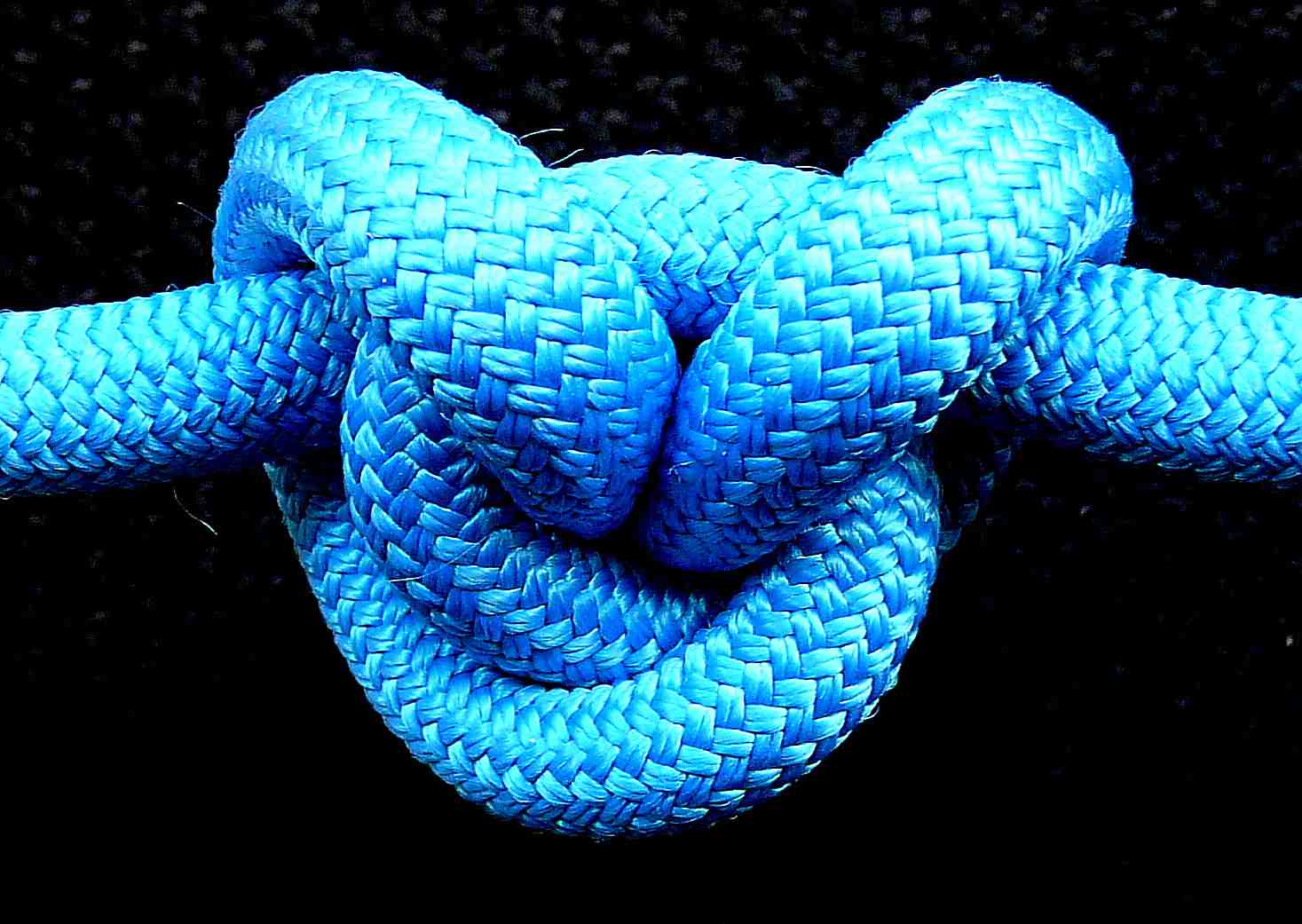Hello all,
I am still curious if any of you have seen or read this method of tying the ABK before.
now, to reply to some specific points:
Yes, because, when loaded from the one end, the Standing Part s first curve is almost two times as wide as when loaded from the other end. At their X-shape crossing ( clearly visible when the knot is viewed from one of the two "flat" sides ), the one segment goes "over" the other, and that makes the curve which incorporates the "over" segment ( and encircles the "under" segment ) wider than the curve which incorporates the "under" segment. At this first curve the knot bears 100% of the load, and, presumably, a wide, gentle curve is always stronger/more evenly loaded than a narrow, sharp one, therefore the first curve is the weakest link of the knot s structure. ( However, the point of rupture is, most of the times, different from the point of maximum strain... )
Xarax, I follow you’re thesis that there is a Stronger and a Weaker loading side of any ABK. First, it looks to me that the stronger side, with the wider internal knot bend, is pointing up (to the standing end) in my video. Therefore, the stronger side is taking a load should you load the loop of the knot. Am I missing some detail that you are seeing?
Simply because there are no data, for any knot, anywhere ! :)
The CMC rescue guide states that the alpine butterfly has a efficiency of 75% when the loop is loaded, and 57% when pulled end to end (as a butterfly bend would, or the ABK used to isolate a damaged section of rope). I’ve seen similar efficiencies posted in other resources as well. In reading dozens of books, attending multiple professional trainings, and working with many experienced riggers over the years, I’ve never encountered the idea that there is a right and wrong way to load a ABK. I would say that conventional wisdom is that they are both equal, or that the difference is so negligible as to be disregarded.
Of course, conventional wisdom could be wrong. In the multiple sources I can find stating the efficiency of the ABK, none of them specifically mention testing the left hand and right hand loading of the loop. I had considered this due to the fact that there is no meaningful difference, rather than inattention on the part of the testers. You, yourself, mention the important point that a rope with almost always break just outside the body of the knot (a fact widely and generally noted). Given that fact, it is mysterious how the internal structure of the knot affects the strength.
I’ve read multiple theories of what makes knots weak, or strong. And while there does seem to be some agreement, there are also contradictions (as I’m sure you’re aware) and I believe that the only reliable way of measuring knot efficiency is through break testing. I have access to a break testing rig, and when I have time, I intend to test your thesis that the left and right hand loading of the ABK, have a significant difference, I’ll let you know.
In the mean time, I’ll stick with conventional wisdom.
on to Roo:
I think other methods do a better job at either forcing the tyer to make the correct move
I agree with you about this, although I do think the point is worth discussion. I think that this “new” method of tying the ABK would be useful to “expert” users who tye this knot regularly, know it well, can reliably inspect a tied version to insure it’s tied correctly. It has advantages over the two traditional methods, in my opinion. At the very least, it’s useful for impressing your peers over beers after the gig  I don’t think I would teach this method to someone who didn’t already know the ABK. The “coil” method is probably best for that.
I don’t think I would teach this method to someone who didn’t already know the ABK. The “coil” method is probably best for that.
I do wonder about people who are worried about the line suddenly seeing severe load while they're tying
While working at height, any reduction in risk, however slight, has merit. It is a subtle (but worthy) distinction between having three wraps of rope around your palm for 10 seconds vs. having a loosely formed loop around your fingers for two seconds. As far as sizing of the loop: it is possible to form a 5 foot long loop in the ABK for a Y hang anchor, or rope re-direct, it’s just very awkward. The twisting method is superior in this application, but with that much rope to pass, it can be clumsy and awkward to complete the “fold” of the knot. I believe “my method” can be better in this (admittedly very specific, and somewhat limited) application.
finally to Alan:
Sometimes it is the ideas of another that can instigate sparks of creativity
and I dare say, even private appreciation.
It brought me great joy to watch your video of your method of tying the ABK. The loop appears almost as if by magic, and has a wonderful element of theatricality to it. I’m greatly pleased to have been able to connect with a fellow knot aficionado in China!
Thanks to all of you for taking the time to watch the video I posted, and to share your thoughts with me.
andy
